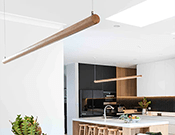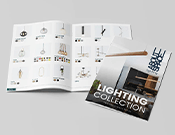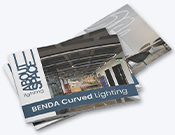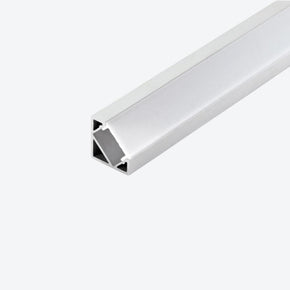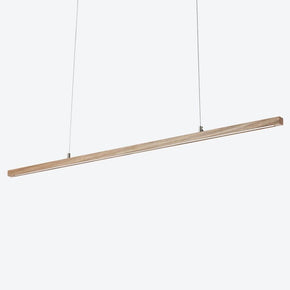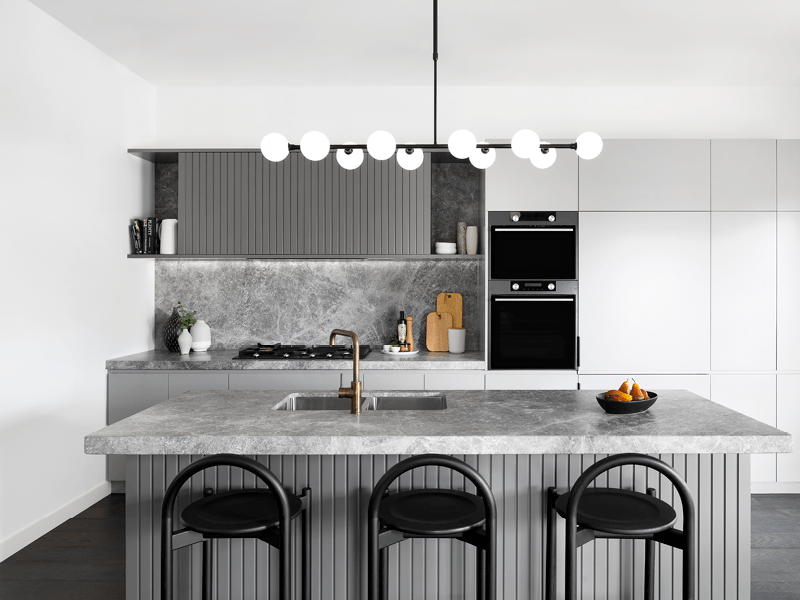- No products in the cart.
- ``
All you need to know about colour temperature
30
Sep
Perhaps the two most important factors when choosing an LED light source are colour temperature and colour rendering.
We’ve touched on colour temperature before, but it’s such an important subject, we think it’s worth giving it more attention.
When we talk about colour temperature, we’re referring to the warmth or coolness of light, with warmer light being more yellow, and cooler light being more blue. There is no one-size-fits-all ‘standard white’ LED. You need to make a choice when you purchase your fittings: do you want a warm light or a cool light?
How is colour temperature measured?
The colour or warmth of white light is measured on what is known as the Kelvin scale - the warmer the colour the lower the colour temperature. For example, the light you get from a candle is very warm - basically yellow or orange, whereas daylight at noon is very cool. Candles sit around 2000 degrees kelvin (k), while daylight typically sits around 5500k to 6500k.
Where do LEDs sit on the Kelvin scale?
The majority of LEDs are produced to be either 2700k, 3000k, 4000k or 5000k. The 2700k to 3000k LEDS will emit a warm light, while the 4000k to 5000k will emit a cool light.
Some people do have some misconceptions about LEDs. It’s often thought that LEDs provide a cool, unflattering light. This is almost certainly due to previous experience with cool 4000k low-quality LEDs. We can assure you there are now some fantastic LEDs available. The LED fittings can provide a lovely good-quality warm light. In fact, with most of them you can’t tell the difference between halogen.
At About Space, 80% of the luminaires we specify are warm white (2700k to 3000k). Generally, it’s 95% for our residential projects. But cool white LEDs do have their place. Cooler white is often used in office projects and workspaces, because the cooler bright light can help increase productivity.
Choosing the perfect colour temperature to enhance your interior design
When choosing colour temperature, you first need to consider the finishes and colour palette of each space. Reds, orange, yellow, and wood all look beautiful under warm white light. Whereas blues, and greys can look flat. Cool white will make blue colours look amazing and can make white look crisp, but reds and yellows can appear a little brown and wood can look dull.
In your home, it may be worth considering using cooler LEDs in the kitchen, laundry or bathrooms, particularly if plenty of natural light is available. Warm white LEDs can make white surfaces look a little muddy compared to daylight and generally bathrooms and kitchens have white finishes. Cooler white can also create a more clinical, clean or sanitary feel, which can be desirable in a bathroom or kitchen.
Can you mix and match colour temperatures?
No, you don’t want to mix colour temperatures in a room. Once you’ve decided which colour temperature to go for, stick with it, and make sure all lights and light bulbs in that space are the same. Before you buy any new lights, you should first check all light sources that may already be in the room, including any lights that come built into fixtures like cooker hoods or bathroom mirrors.
In the past few years, tunable white light fittings have come onto the market. These give you the ability to adjust or tune the warmth of the light source. Fantastic for creating different effects, making your space cooler during the day and warmer at night, or lighting artwork, giving you the ability to tune the light to complement the colour palette of your favourite pieces.
How to achieve the perfect colour temperature for your next exciting project
For more information and advice on what colour temperatures to use in your project, get in touch with the About Space team. Our designers are more than happy to help. The golden rule is ALWAYS check colour temperature before you spend your money. Colour temperature will be stated on the packaging or product data-sheet.


